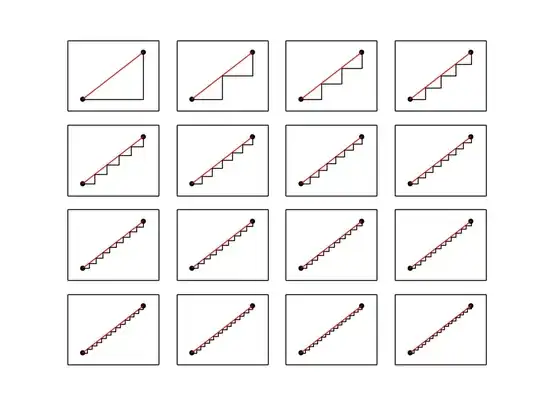I was thinking about this problem yesterday and was wondering if someone can provide some insight into it.
Let's say we have two points in Euclidean space: $p_1$ at $\left(0, 0\right)$ and $p_2$ at $\left(1, 1\right)$.
When considering the path between these two points, we can visualize the $L_2$-norm as a straight line between the two points and the $L_1$-norm as a two-line segment that contains a segment along the x-axis of length 1 followed by a segment along the y-axis of length 1.
Additionally, you can represent the path where you take smaller step-sizes, such as 0.5, such that you create a multi-segmented line. Below is an illustration of $k=1\dots16$.

However, this multi-segmented line still has length of 2. This brings up the first question:
- Why is it if you were to take the limit as $k \rightarrow \infty$, the multi-segmented line appears to converge on the target line, but the length is still of length 2?
There's the intuitive answer of "duh", but why can't you express the length of the the line as a limit or integral? The area between the two lines appears to converge to zero, but the length of our approximation is still of length 2.
This leads into the more interesting question of:
- Is there a name for this question / paradox?
I'm really curious if there are any examples of this paradox in the physical sciences, where attempts to "approximate" a line integral using orthogonal components fails to converge on the actual solution.
Thanks!